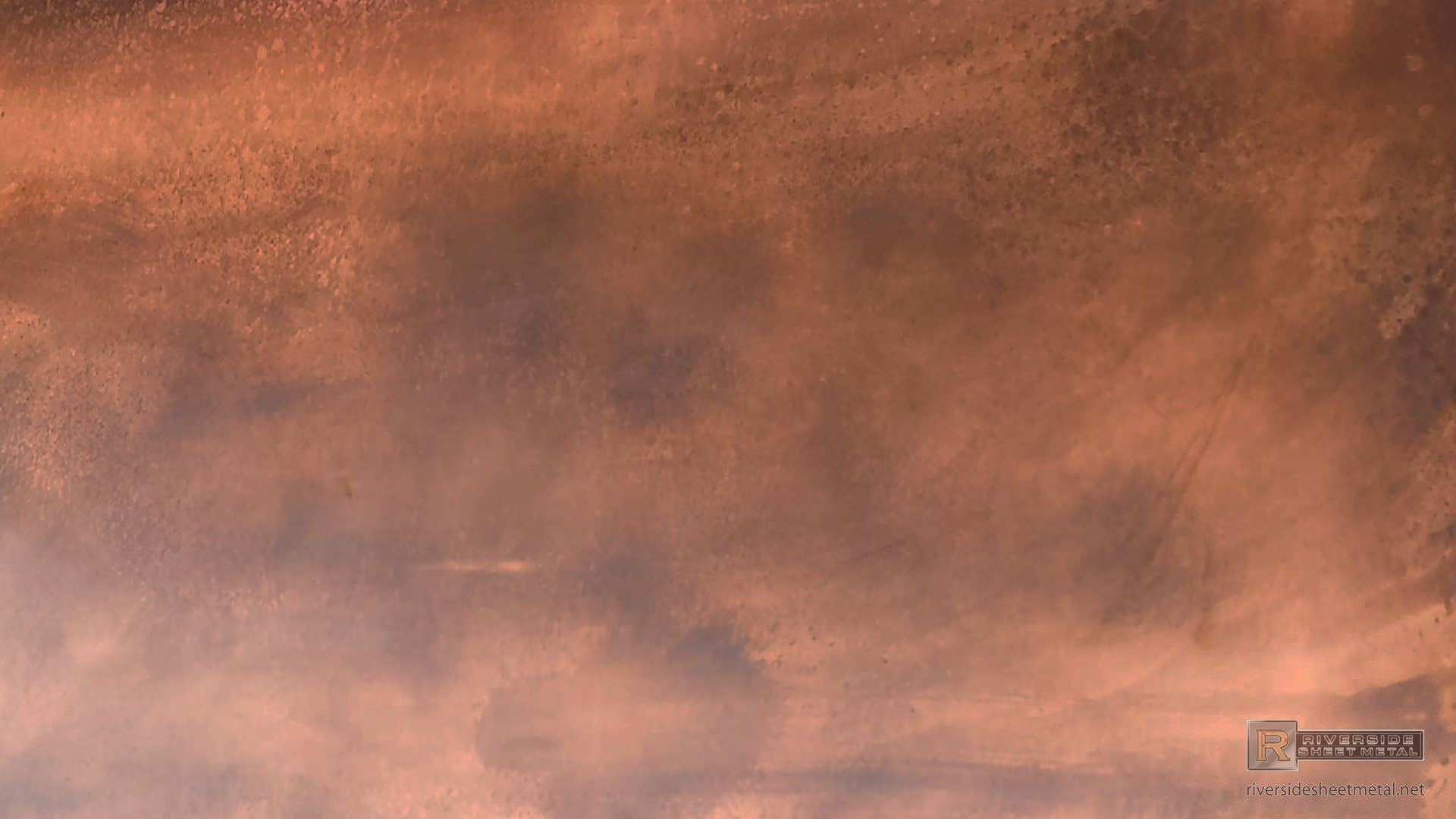
I will use a gloss finish next time to see the difference. I removed them and used blue scotch pad to buff them before applying a matte finish. I left mine in an hour and they had a gorgeous green crust developing. You can observe the chemical process as the washers darken then begin to develop a patina. Immediately and carefully put on the mason jar top with the washers suspended above the water.ĭepending upon the purity of your copper washers you will see a chemical reaction taking place almost immediately.

Take a couple quarter size pieces and carefully place in the mason jar into the water.
Chemical patina copper zip#
Open the zip lock and carefully open the chlorine tablet bag. Take the hammer and hit the chlorine tablet hard enough to break it into several pieces. Place the unopened 3 inch chlorine tablet in a zip lock baggie. Put on a long sleeved shirt, your gloves and safety glasses. Take the top off the mason jar and sit aside with the washers on the headpins ready to go. Once you are happy with your setup then proceed. The further away from the water and the closer to the mason jar top then the more they will be affected by fumes. This is a test to make sure your setup is correct. Put the top on with the washers hanging on the headpins above the water. Place the mason jar on a level surface outside ( ventilation is important! ) Thread a headpin into each hole and make a hook on the end of each headpin which will hold the washers. Punch or drill 2 small tiny holes in the mason jar top.
Chemical patina copper skin#
Your skin contains oils that will inhibit the formation of patina on your copper washers. Take the copper washers and clean them with 0000 steel wool, texture them if you like, drill any holes you may want and then wash them in dish detergent and rinse and dry without touching them with bare hands. 2) copper washers thoroughly cleaned and textured if you like 2) 3 inch headpins or 2) 4" pieces of wireĨ. pair safety glasses (goggles are better)ħ. pair long heavy duty rubber or vinyl glovesĤ. I tried a little something and had terrific results. I found an article discussing why chlorine will turn a pool green if copper is present in the water. After trying several suggestions online with less than satisfactory results I decided to do a little research. I design custom jewelry and was looking for a way to age copper fast and get a nice green patina. It is available in easy to use gel form on line or at a metal art supply store. It has been my experience the easiest way to achieve the patina you are looking is to use I suspect it would be in a local library, and I'd suggest you start there.Ī. Sienna, there is a nice article in the Metal Finishing Guidebook and Directory on ANTIQUING OF BRASS, COPPER, AND BRONZE by Mark Ruhland of Birchwood Casey. PS, this solution is relatively safe, but it will slightly etch concrete and it will promote rust on virtually any bare steel within several feet. The temperature changes with the humidity and dew seems to accelerate the process. This also needs to set outside for the duration. You could also try straight vinegar. Use a little less of this as it is about 20% stronger. Another source would be the chem lab, only here it will be labeled hydrochloric acid. A guess would be a couple tablespoons of common table salt, 1 liter of water and acidify with a couple teaspoons of muriatic acid. One way is to set it outside and spray it every morning and every night with a mist or acidified salt solution.

Chemical patina copper how to#
So please does anyone have an answer? It would be a great help to know how to turn copper green without the use of a patina, because I will get extra marks for the oxidizing process.Ī. Anyway, I then tried bleach, which is working VERY slowly, and also it would not be practical to oxidize 180 cm copper rods in bleach. And on further heating it just created a layer of black carbon (or was it black copper oxide?). So I would like to know if there were a quick way to oxidize the copper, and create an authentic layer of copper oxide around it, without using any patinas? I have already tried heating small samples of copper, which did turn the copper green for a while, but the oxide ions didn't stick to the copper and so dissipated away again. But to suit the style of my design, it would be more aesthetic if the copper where rustic, i.e. I want to use copper rods for my main shaft, which I will try to entwine around each other. For a Design and Technology project I have to design and build a light. ↓ Closely related postings, oldest first ↓ I hope 2022 is treating you and yours like beloved friends. Tried your method Hill), and wow what a brilliant result! Thanks for sharing your wisdom. I found this thread while looking for a quick way to oxidize the copper beads I make. Oxidize copper without patinating solution Plating, anodizing, & finishing Q&As since 1989


 0 kommentar(er)
0 kommentar(er)
